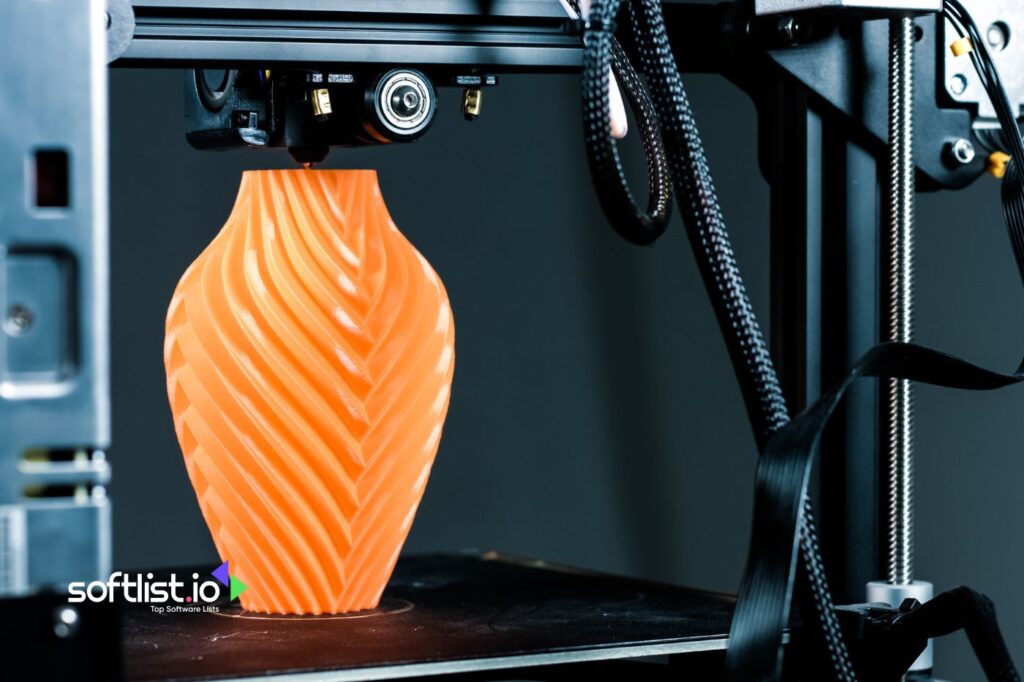Choosing the right filament can transform your 3D printing project from standard to stand out, imbuing your creations with not just life but also durability and vibrancy. This guide aims to simplify the complex world of 3D printing filaments, helping you select, store, and utilize the ideal filament for your needs. Whether you’re a novice embarking on your first 3D print or a seasoned maker aiming to elevate your work, understanding filament choice is key to ensuring your next project shines.
What Is 3D Printing Filament?
3D printing filament is the bread and butter of FDM (Fused Deposition Modeling) printers. Think of 3D printing filament as the lifeblood of FDM printers. It’s the material that your printer transforms into something tangible, layer-by-layer, to bring your designs to life. The type of filament you choose plays a crucial role in determining the strength, flexibility, and final look of your print, underscoring the importance of picking the right filament for the job.
Types of 3D Printing Filament
- PLA: This eco-conscious choice is perfect for beginners, offering easy use, minimal warping, and a range of vibrant colors.
- ABS: Opt for this if you need your print to withstand stress or high temperatures, but be prepared for a bit more complexity in printing.
- PETG: Ideal for a broad spectrum of projects, PETG delivers both durability and printability, resisting impact and heat.
- TPU: When flexibility is needed, TPU’s rubber-like quality is unmatched, making it ideal for wearables or protective cases.
Each filament type has its own unique properties, such as strength, flexibility, durability, and heat resistance, which can be leveraged to achieve specific results in your prints.
Choosing the Perfect Filament

Key Considerations in Filament Selection
The key to filament selection lies in matching the filament to the project’s requirements, your printer’s capabilities, and the conditions the final product will face. Whether it’s the aesthetic appeal of PLA for ornamental pieces or the functional resilience of PETG for parts exposed to the elements, choosing the right filament makes all the difference.
Comparing filaments side by side clarifies their potential applications. PLA’s low warp makes it great for detailed work, where precision is paramount. ABS offers toughness for parts that must endure, despite its printing challenges. PETG combines ease and endurance, providing a versatile option for projects that demand both beauty and brawn.
Preparing for Success: Filament Storage and Handling

Proper Filament Storage
Ensuring your filament is stored properly is key to maintaining its quality and ensuring seamless production. Humidity can greatly affect filament properties, causing issues when extruded. Solutions like vacuum-sealed bags equipped with desiccant packs help retain the filament’s integrity by keeping it dry and ready for your next creative project. Such careful storage is crucial, especially for white filaments, where any degradation in quality can significantly impact the visual content of your print.
Loading Filament Smoothly to Reduce Friction
Correctly loading your filament into the printer is fundamental to a trouble-free printing experience. A simple trick is to snip the filament end at an angle, facilitating an easier insert into the extrusion mechanism. Ensuring the filament spool is tangle-free and correctly aligned minimizes friction and prevents common feeding problems, laying a strong foundation for high-quality 3D printing.
Optimizing Your Printing Process

Adjusting Printer Settings for Different Filaments
The secret to mastering your print jobs lies in customizing your printer settings to match the specific requirements of each filament type. Variables such as extrusion temperature, print speed, and retraction need fine-tuning to accommodate different materials, from the robustness of carbon fiber-infused filaments to the flexibility of TPU. Tailoring these settings helps overcome common printing hurdles, ensuring your printer delivers top-notch results consistently.
Achieving Optimal Print Quality
Beyond filament type, achieving the highest quality print involves strategic adjustments and regular printer maintenance. Application of bed adhesives, like blue painters tape for increased grip, or adjusting the glass plate temperature can dramatically improve the first-layer stick and reduce warping. Regularly calibrating your 3D printer ensures it performs optimally across various projects, maintaining the essence of your creative content in every print.
Navigating Common Filament Challenges
Troubleshooting Filament Jams and Clogs
Jams and clogs can disrupt the printing process, often requiring a maker’s ingenuity to resolve them. Routine checks and cleaning of the printer’s core components, such as the nozzle and extruder, ensure filament flows freely, reducing the risk of unexpected downtime. When faced with adhesion challenges, experimenting with different bed adhesives or refining the temperature settings can provide a remedy, allowing for uninterrupted production of your 3D printed parts.
Combatting Adhesion Issues and Warping
Adhesion issues and warping are common challenges that can affect the quality of your prints. Ensuring a clean, level print bed is the first step in tackling these problems. For materials like ABS, using a brim or raft can enhance bed adhesion and minimize warping. Adjusting the first layer printing temperature and speed can also make a significant difference, as can enclosing your printer to maintain a consistent temperature during the print. Each filament type may require a different strategy, so don’t be afraid to experiment.
Exploring Advanced Filament Options
Specialty and Composite Filaments
In the diverse landscape of 3D printing filaments, the selection available to makers extends far beyond the basics. From filaments that mimic the aesthetics of wood and metal to those that glow in the dark, each special product offers unique possibilities for creative expression and functional design. For those seeking strength and durability in their prints, composite filaments, enhanced with carbon fiber, stand out as a robust choice, perfect for creating parts that last.
Best Practices for Printing with Specialty Materials
Adapting your machine settings is essential when transitioning to specialty or composite filaments. Each unique blend may require adjustments to nozzle size, bed temperature, and even the speed at which the filament is extruded to ensure optimal results. For instance, materials like carbon fiber demand a wear-resistant nozzle to cope with their abrasive nature, highlighting the need for tailored approaches to each filament type.
Sustainable Printing Practices
Eco-Friendly Filament Choices
The movement towards sustainable printing practices is gaining momentum, with eco-friendly filament options taking center stage. PLA leads the charge as a biodegradable alternative derived from renewable resources, offering an environmentally responsible choice for makers. Beyond selecting sustainable filaments, engaging in recycling initiatives for used filament and print rejects plays a crucial role in minimizing the environmental footprint of our 3D printing endeavors.
Recycling Used Filament and Prints
The commitment to sustainability extends to how we handle filament waste and misprints. Whether through community-led recycling programs or creative reuse projects, finding ways to give plastic a second life is key. Innovations in recycling technology that convert old prints back into usable filament are paving the way for a more circular approach to 3D printing materials.
Final Thoughts
Navigating the filament landscape is a journey of discovery, offering a chance to enhance the quality and impact of your 3D-printed parts. By aligning filament choice with project requirements and environmental considerations, makers can achieve their creative goals while adhering to principles of sustainability.
The path to becoming proficient in 3D printing is marked by experimentation and learning. Exploring the vast array of filaments available, understanding their properties, and fine-tuning your printer’s settings to accommodate them are all part of the process. Each print, successful or not, is a step toward mastering the intricate dance of 3D printing.
Unleash your creativity with an array of materials. Softlist’s ‘AI Art Generator‘ category reveals a world of possibilities for your next design project.
FAQs
How do I choose between PLA and ABS filament for my project?
Consider PLA for detailed models and beginner-friendly projects due to its ease of use and eco-friendliness. Choose ABS for parts needing higher durability and heat resistance, but be prepared to manage its tendency to warp.
What signs indicate my filament has absorbed too much moisture?
If your filament makes popping sounds while printing and the finished print has a rough surface or small holes, it has most likely absorbed too much moisture.
Can I use the same print settings for all types of filament?
No, each filament type requires specific settings for temperature, speed, and retraction due to their different melting points and behaviors during printing.
How can I prevent my filament from tangling during a print?
Ensure the filament spool is properly mounted and the end of the filament is securely clipped when not in use to prevent unwinding and tangling.
Are there any health risks associated with 3D printing filaments?
Printing with materials like ABS can emit fumes; therefore, it’s recommended to use them in well-ventilated areas or consider using a filtration system to mitigate health risks.







